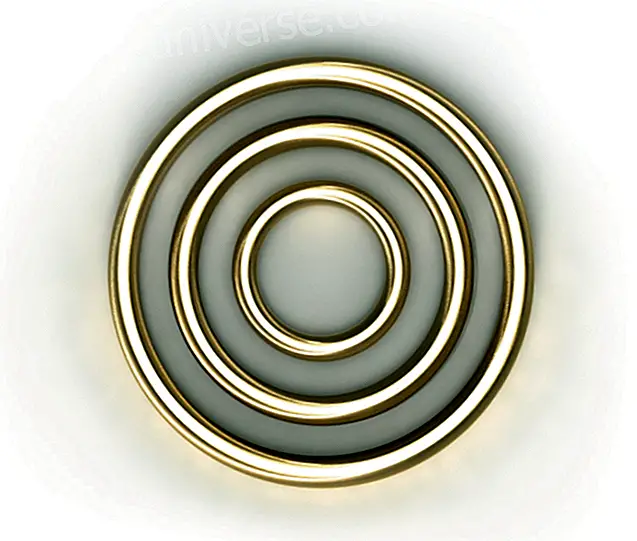Thrombosis is a circulation problem that occurs when a vein or artery is blocked by the formation of a thrombus, this is made up of cells and coagulated blood.
The cause is a chronic inflammation of the arterial walls, which prevent the adequate passage of blood flow and triggering other symptoms that deteriorate our quality of life.

In most cases it occurs in the lower extremities, where varicose veins are formed.
It is a problem associated with a slow circulation
This problem is associated with a decrease in the slowness of the circulation, the increase in the thickness of the blood and alterations in the quality of the veins.
In some cases it can become an embolism, which is when the clot forms and breaks off traveling through the bloodstream, being able to get trapped in the brain, lungs or other vital organs and can cause serious injuries.
In many cases this problem has been related to genetic factors, but it is proven that lifestyle habits greatly influence this being a very important factor in the development of this condition, it is also usually more frequent in the old age.
Some symptoms that may indicate a possible thrombosis:
It was possible to suffer two types of thrombosis, one more superficial and another more severe that would undoubtedly cause a higher risk.
The symptoms associated with each problem must be taken into account :
Superficial venous thrombosis:
In this case, some area of our varicose veins increases in size until it becomes a kind of cord that is quite hard to touch and bluish and looks simple, it is quite painful and very hot to the touch, feeling enough pressure at the end of the day and being Very susceptible to infections and phlebitis.
The moment when superficial thrombosis becomes deep, usually goes unnoticed. We must be alert with the following sensations:
A very high pressure in that part where we have those more inflamed varicose veins.
An almost unbearable heat in that part.
Tingling up the leg to the groin.
The leg, we touch it with the hand and perceive it very rigid.
When the skin of the leg becomes bluish, or it becomes colorless or very pale. The latter would be the result of arterial blood already arriving with a lot of difficulty.
How to prevent thrombosis?
When we have circulatory problems, it is almost always of genetic origin. The hereditary factor coupled with incorrect lifestyle habits, sedentary lifestyle, improper feeding, overweight, all this will undoubtedly cause us to suffer from varicose veins and large circulatory problems.
We must not wait for varicose veins to appear, since we have a minimum symptom, we must begin to put all our efforts so that it does not lead to superficial or severe venous thrombosis:
Exercising every day, walking an hour helps a lot, Swimming or cycling are also very suitable options.

Take cold showers on the legs upwards.
Avoid refined salt, and in large quantities in the diet, white sugar, saturated fats, pastries, soft drinks, white flour etc. All those foods that will cause us to have poor blood circulation.
Drink plenty of fluids, natural juices and infusions such as horsetail, witch hazel, rosemary, rusks, cranberry, horse chestnut, ginkgo biloba red vine etc.
Very effective creams can be the "horse chestnut", aloe, rosemary, arnica, marigold, harpagofito, menthol etc. Some varieties of these creams can be found in herbalists and pharmacies are very effective in treating these superficial varicose veins.
When you already have primary venous thrombosis, and the veins have an important relief and bluish color, you should always consult with your specialist for a possibility of having a serious thrombosis .
It is important to become aware and adopt good customs to reduce the risk of this problem such as:
Do physical activity
To prevent possible thrombosis, regular physical activity is important. This healthy habit helps maintain a stable weight and has incredible benefits on the cardiovascular and circulatory system.
Activities such as hiking or swimming are beneficial for good blood functioning.
No Smoking.
The harmful effects of tobacco damage the respiratory system, but this also carries other serious consequences on vital organs for health.
Its chemical toxins accumulate in the bloodstream, reducing oxygen and making the blood thicker.
Leaving this habit is decisive for good circulatory and cardiac health.
Maintain an adequate weight.
People who are overweight have a higher risk of having circulation problems due to the pressure that their leg veins have to support.
In addition, obesity leads to an imbalance in the levels of cholesterol and triglycerides that can cause arterial obstruction.
Avoid sitting for a long time
Remaining seated for a long time is a factor that increases the risks of circulation problems.
The lack of movement in the legs for many hours causes fluid retention and hinders good blood flow.
Walking a few minutes inside the house or in the workplace, raising your legs for a moment or going up and down the stairs are some of the ways to give a boost to the circulatory system.
It is important to avoid crossing the legs for a long time. This habit may be related to the obstruction of blood in the legs.
Adopt good feeding habits.
food is essential to prevent them
The nutrients that are provided to the body through food are essential to prevent the formation of thrombi and varicose veins.
The consumption of foods rich in vitamin C, increases the production of collagen and elastin, two substances that help maintain the elasticity of arterial walls.
You should also consume more vitamin E, an antioxidant that prevents oxidation and prevents coagulation.
Vitamin K is essential to reduce veins and thrombosis.
Some recommended foods.
The Orange  Tangerine
Tangerine
Grapefruit
The Kiwi
The handle
Strawberries
The cherry
The grape
The almonds
Avocado
Wheat germ
Broccoli
Garlic
The onion
Ginger
Turmeric
Virgin olive oil etc
You can also consume supplements such as Vitamin C, Bioflabonoids, Ginko Biloba, Ruscos, Horse Chestnut, Vitamin E, Magnesium, Potassium, Horsetail etc. , these and some are very helpful in these cases.
It is very important to take into account these recommendations because we can all have the risk of developing this condition at any stage of our life, and especially at mature ages, it is very important to prevent if you have a family history.
In Kinesiology we use several kits, with which we test, vitamins, minerals, plants, trace elements, homeopathy floral essences. etc, and being able to give each person the most appropriate treatment in their particular case
All these tips do not replace the visit to a specialist who diagnoses and the most appropriate guidelines in each case.
source consulted for this article- Barcelona alternative
M. Carmen Hernandez- Professional Naturopath Kinesiologist






